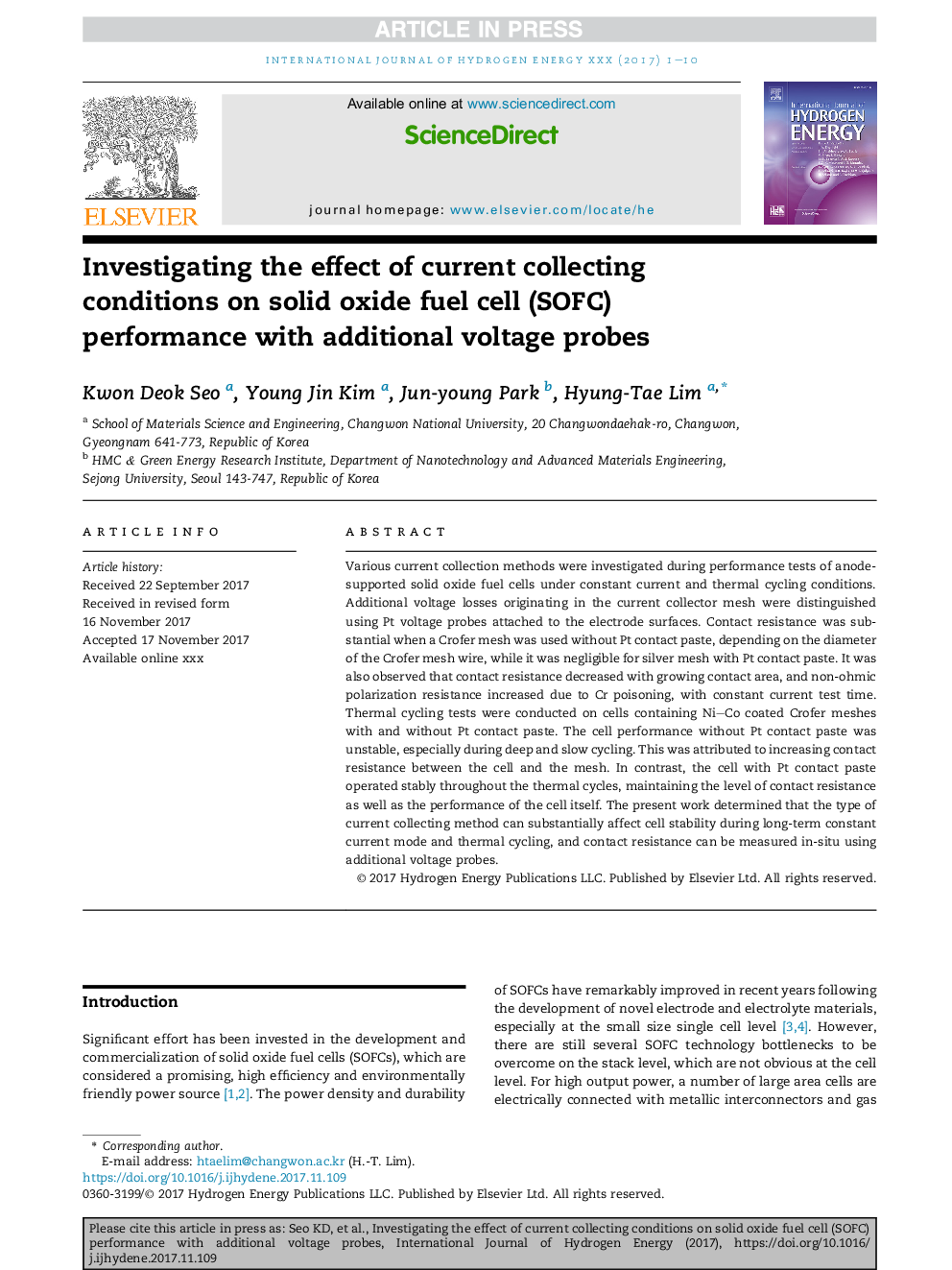| Article ID | Journal | Published Year | Pages | File Type |
|---|---|---|---|---|
| 7708273 | International Journal of Hydrogen Energy | 2018 | 10 Pages |
Abstract
Various current collection methods were investigated during performance tests of anode-supported solid oxide fuel cells under constant current and thermal cycling conditions. Additional voltage losses originating in the current collector mesh were distinguished using Pt voltage probes attached to the electrode surfaces. Contact resistance was substantial when a Crofer mesh was used without Pt contact paste, depending on the diameter of the Crofer mesh wire, while it was negligible for silver mesh with Pt contact paste. It was also observed that contact resistance decreased with growing contact area, and non-ohmic polarization resistance increased due to Cr poisoning, with constant current test time. Thermal cycling tests were conducted on cells containing NiCo coated Crofer meshes with and without Pt contact paste. The cell performance without Pt contact paste was unstable, especially during deep and slow cycling. This was attributed to increasing contact resistance between the cell and the mesh. In contrast, the cell with Pt contact paste operated stably throughout the thermal cycles, maintaining the level of contact resistance as well as the performance of the cell itself. The present work determined that the type of current collecting method can substantially affect cell stability during long-term constant current mode and thermal cycling, and contact resistance can be measured in-situ using additional voltage probes.
Related Topics
Physical Sciences and Engineering
Chemistry
Electrochemistry
Authors
Kwon Deok Seo, Young Jin Kim, Jun-young Park, Hyung-Tae Lim,
